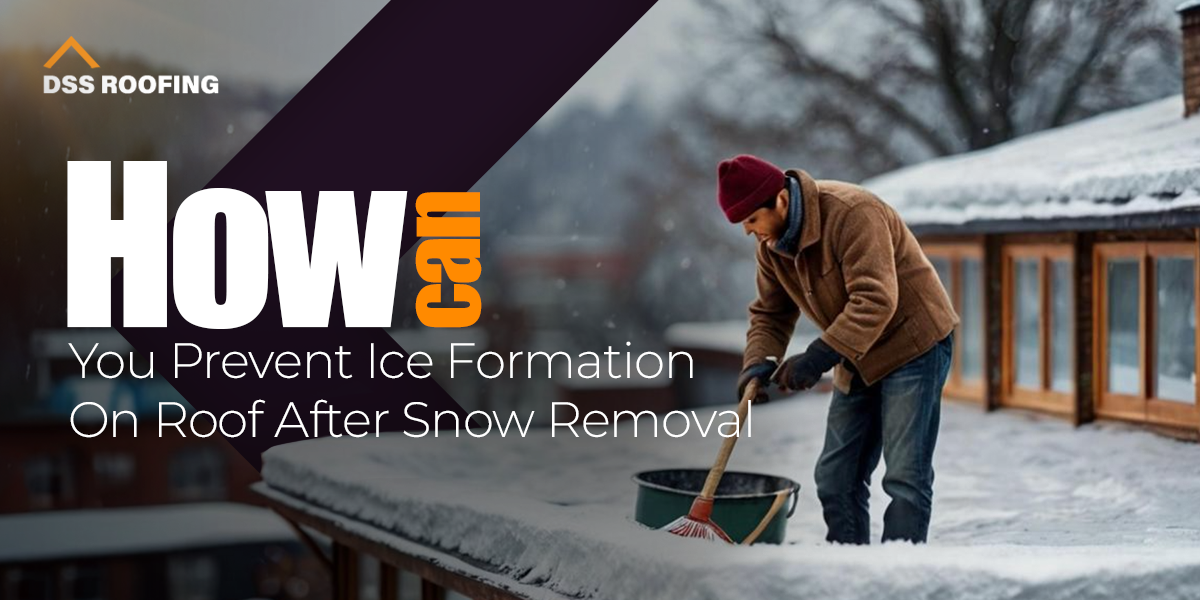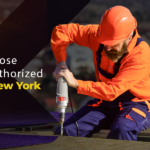How Can You Prevent Ice Formation on Roof After Snow Removal
Winter can be a magical season, with snowflakes gently falling and blanketing everything in white. But as beautiful as snow may seem, it can cause problems, especially when it collects on your roof. After snow removal, many homeowners face the challenge of preventing ice formation, which can damage the roof, cause leaks, and create safety hazards.
So, we are here with some simple techniques and tools that can prevent ice formation on your roof after snow removal. Here we go!
Understanding Ice Formation on Roofs
Ice dams, caused by melting snow, form when water from the roof reaches the eaves, forming a ridge that traps more water, causing leaks, roof damage, and gutter damage.
Preventing ice formation involves stopping these ice dams from developing and ensuring that melted snow flows off your roof without freezing again.
Ways to Prevent Ice Formation
Some of the best tips to protect your roof from ice formation include:-
1. Ensure Proper Insulation and Ventilation
One of the main reasons ice forms on roofs is uneven heating. If your attic is warm, it can cause the snow to melt in certain areas, but when that water flows to the colder parts of your roof, it refreezes, causing ice dams.
Tip:
- Check your attic insulation. An appropriately insulated roof keeps heat from escaping. By keeping the attic cold, you prevent snow from melting unevenly.
- Ventilate your attic. Proper ventilation in your attic is crucial for temperature regulation and preventing ice formation on the roof, ensuring cold air circulates and warm air is prevented.
2. Use Roof Rakes for Snow Removal
After a heavy snowfall, removing the snow from your roof is crucial. The less snow on your roof, the lower the risk of it melting and refreezing as ice.
Tip:
- Use a roof rake to gently remove snow, starting at the edge and working upward, avoiding damage to shingles.
- Avoid scraping or damaging shingles while raking the roof to prevent gaps for water from seeping in.
3. Apply Calcium Chloride De-Icer
If you notice ice starting to form on your roof, you can use a calcium chloride-based de-icer. Unlike salt, which can be harsh on shingles, calcium chloride is less corrosive and effectively melts ice without causing damage to your roof.
Tip:
- Spread calcium chloride along the eaves and areas where ice dams tend to form. This will help prevent ice from accumulating and keep the water flowing off the roof.
- Avoid using regular rock salt, as it can damage shingles, gutters, and nearby plants. Stick to calcium chloride, which is safer for your roof.
4. Install Heated Cables (Heat Tape)
Heated cables, also known as heat tape, are an effective solution to prevent ice formation on roofs. These cables are installed along the roof’s edge and are designed to heat up, preventing snow from melting and refreezing into ice dams.
Tip:
- Heated cables can prevent ice dams by preventing snow from refreezing and ensuring smooth water flow off the roof.
- Ensure heated cables are installed securely and connected to a safe power source to prevent ice buildup during and after snowstorms.
5. Maintain Your Gutters and Downspouts
Clogged gutters and downspouts can prevent ice dams by allowing water to pool and refreeze, preventing snow from naturally draining through the roof.
Tip:
- Clean your gutters before the winter season starts. Eliminate any dirt, leaves, or other debris that can obstruct the water’s flow. Professional roofing contractors buffalo always suggest people keep their gutters clean.
- Make sure your downspouts direct water away from your house’s foundation. Clogged or improperly placed downspouts can cause water to back up onto the roof and freeze.
6. Use Snow Guards for Steep Roofs
For homes with steep roofs, snow guards can be a valuable tool in preventing ice formation. Snow guards are designed to hold snow in place, preventing it from sliding off all at once and creating dangerous ice formations.
Tip:
- Snow guards on steep roofs prevent snow accumulation and freezing, distributing snow weight evenly and reducing the risk of ice dams.
- Snow guards are especially useful for roofs that tend to have heavy snow accumulation during the winter season.
7. Fix Leaks and Seal Cracks
Small leaks or gaps in your roof can allow warm air to escape, which contributes to uneven snowmelt and ice formation. Even tiny cracks can let enough heat out to cause problems.
Tip:
- Regularly inspect your roof for leaks or cracks, and if any damage is found, seal it with caulk or a weatherproof sealant to prevent heat escape.
- Repair damaged shingles or flashing immediately to prevent snowmelt from seeping in and refreezing.
8. Monitor and Control Roof Temperature
As mentioned earlier, uneven heating is one of the primary causes of ice dams. Keeping your roof at a consistent, cool temperature can go a long way in preventing ice formation.
Tip:
- Utilize thermostat-controlled attic fans to maintain stable attic temperatures, cooling the attic down when temperatures rise, and preventing snowmelt refreezing on the roof.
- As previously mentioned, keeping the attic well-insulated and ventilated is key to maintaining the right temperature.
9. Regular Roof Inspections
Having your roof inspected regularly can help catch potential issues early before they lead to major problems like ice dams. Professional roofers can identify weak spots, check insulation, and recommend repairs to keep your roof in top shape.
Tip:
- Before winter, schedule annual roof inspections with a professional to assess damaged shingles, insulation, and potential ice-forming issues.
- Regular inspections will save you from costly repairs down the line and keep your home safe during winter.
10. Be Proactive About Snowstorms
Keeping an eye on the weather forecast is important during the winter months. After a major snowstorm, you’ll want to act quickly to remove snow and prevent ice formation.
Tip:
- Immediately clear your roof after heavy snowfalls with a roof rake or other snow removal tool to prevent snow from melting and refreezing into ice dams.
- Apply calcium chloride de-icer or turn on your heated cables immediately after removing snow to ensure no ice forms.
Concluding
Preventing ice formation on your roof after snow removal is all about being proactive. With the tips mentioned above, you can keep your roof ice-free and protect your home from winter damage. Don’t wait until ice dams form—take steps to keep your roof and home safe all winter.
DSS Roofing provides expert snow removal services to protect your roof during winter. We also offer comprehensive roofing solutions, including repairs, installations, and maintenance, ensuring your roof stays durable and secure throughout the year.



